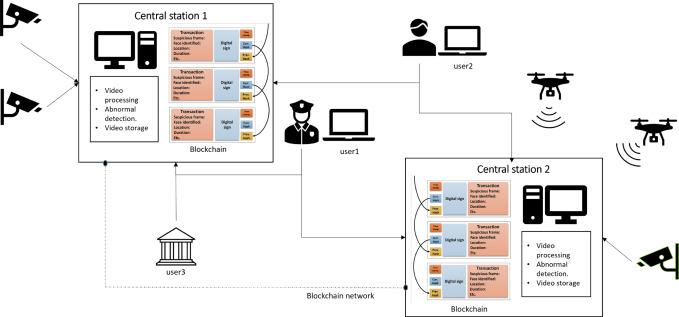Verifying Qualifications: How Blockchain Transforms Credential Authentication
in today’s fast-paced digital world, verifying qualifications—whether academic, professional, or technical—is critical for businesses, educational institutions, and individuals. Yet, traditional methods of credential authentication are fraught with inefficiencies, delays, and opportunities for fraud. Enter blockchain technology: the innovation poised to revolutionize the way we verify and trust in credentials. In this complete guide, we explore how blockchain transforms credential authentication, examining the technology’s benefits, practical usage, and what the future holds.
Understanding Credential Authentication Challenges
Despite efforts to streamline qualification verification, several pain points persist:
- Manual Processes: Traditional verification frequently enough requires contacting issuing bodies, completing paperwork, and waiting days or even weeks for responses.
- Risk of Fraud: Fake degrees and doctored certifications are rampant due to easily forged paper documents and unsecure digital copies.
- Lack of standardization: Institutions and companies worldwide use divergent systems, complicating international or inter-institution validation.
- High Administrative Cost: Human involvement increases both time and financial resources needed for each verification.
Clearly, the demand for a secure, real-time, cost-effective solution is greater than ever.
What Is Blockchain and Why Is It a Game-Changer?
Blockchain is a decentralized and distributed ledger technology that securely records and stores data across multiple computers. Transactions, including diploma or certificate issuances, are cryptographically secured and easily auditable, yet immutable—meaning once written, they cannot be tampered with or deleted.
Key Features of Blockchain for Credential Verification:
- Immutability: Credentials, once validated and recorded on the blockchain, cannot be altered or faked.
- Decentralization: no central authority controls the data,reducing single points of failure and ensuring trust via consensus mechanisms.
- Transparency: Stakeholders can trace who issued the credential, to whom, and when, while respecting privacy controls.
- instant Accessibility: Credentials are available whenever and wherever needed, fostering global mobility for education and employment.
How Blockchain Transforms Credential Authentication
The integration of blockchain into credential verification redefines how qualifications are created, issued, and validated.
1. Secure Issuance of Digital Credentials
Academic institutions, training bodies, and certification providers can issue digital credentials directly onto a blockchain. Each credential is cryptographically signed, uniquely tied to the recipient, and timestamped—creating a permanent and tamper-proof record.
2. Instant and Trustworthy Verification
Employers, recruiters, and other verifiers simply reference the blockchain record using a digital key or QR code. There’s no need to contact issuing bodies.The authenticity of qualifications is confirmed instantly, reducing hiring times and administrative overhead.
3. Empowering Individuals
Individuals own their credentials in digital wallets, allowing them to share proof of qualifications securely with anyone worldwide, at any time. Privacy is enforced; only consented data is ever shared.
Benefits of Blockchain-Based Credential Verification
- Eliminates Credential Fraud: Forgery-resistant verification methods drastically reduce fraudulent claims.
- Cost and Time Efficiency: Automation substantially lowers operational costs and accelerates background checks and onboarding processes.
- International Portability: Blockchain verification works across borders, supporting international students and job seekers.
- Privacy-Centric: Individuals control who sees their data—with no risk of central database hacks or breaches.
real-World Use Cases of Blockchain Credential Authentication
Let’s examine a few leading examples where blockchain is already transforming credential verification:
- MIT Media Lab (Blockcerts): MIT issues digital diplomas using Blockcerts, an open standard for blockchain credentials. Graduates receive ownership of their digital records, which are instantly verifiable by employers worldwide.
- Europass Digital Credentials: The European Union’s Europass platform uses blockchain to provide secure, tamper-proof digital certificates facilitating job and study mobility across member states.
- World Education Services (WES): WES, a global credential evaluation service, employs blockchain to verify international academic records, combating document fraud and expediting application processes.
- Professional licensing: Blockchain platforms are now used to issue and verify certifications for professionals such as doctors, engineers, and accountants—ensuring compliance and up-to-date licensing.
Practical Tips for Implementing Blockchain Credential Authentication
- Evaluate Providers: Choose reputable blockchain credentialing service providers like Blockcerts, Accredible, or Learning Machine. Assess their compatibility with your organization’s needs.
- Ensure GDPR & Data Privacy Compliance: Select solutions that prioritize user consent and comply with international privacy standards.
- Educate Stakeholders: Train both credential issuers and recipients about using, sharing, and verifying digital certificates.
- Integrate Seamlessly: Utilize APIs and WordPress plugins to enable easy integration with existing HR, admissions, or LMS (Learning Management System) platforms.
- Think Forward: Future-proof your investment by choosing solutions built on open standards for greater versatility and interoperability.
First-Hand Experience: Voices from the Field
“Partnering with a blockchain credential provider has fully transformed our alumni verification process. We’ve eliminated weeks of waiting and have given our students the power to prove their achievements instantly.”
– Jane Roberts, Registrar at Leading University
“The time and money we’ve saved during employee onboarding with instant blockchain-verified certificates have been unbelievable. Our hiring is not just faster, but more reliable than ever before.”
– Samuel Lee, HR Manager, Tech Company
The Future of Credential Verification with Blockchain
As blockchain adoption spreads, expect even wider transformation in credential authentication. Soon, most academic institutions and certifying bodies may abandon paper certificates entirely in favor of secure digital records. Governments, industries, and regulators are likely to standardize blockchain-based credentials, paving the way for universal trust and unfettered mobility.
- Interoperability: Universal digital wallets will aggregate all achievements—degrees, licenses, micro-credentials—accessible and shareable in seconds.
- Lifelong Learning: credentials from multiple providers—MOOCs, training centers, universities—will be easily verified, supporting career shifts and upskilling.
- Global Recruitment: International verifications will help solve talent shortages and foster multicultural teams with greater ease.
Conclusion
The era of slow, error-prone, and fraud-susceptible qualification verification is ending. By leveraging blockchain technology, credential authentication becomes fast, transparent, and secure—empowering individuals, streamlining institutional processes, and instilling greater trust globally. For universities, businesses, and professionals alike, now is the time to embrace the blockchain transformation in credential verification—seizing the benefits of a tamper-proof, truly trustworthy digital future.
Looking to integrate blockchain-based credential authentication into your organization? Start exploring solutions today and join the movement to make verified qualifications the foundation of tomorrow’s workforce.

